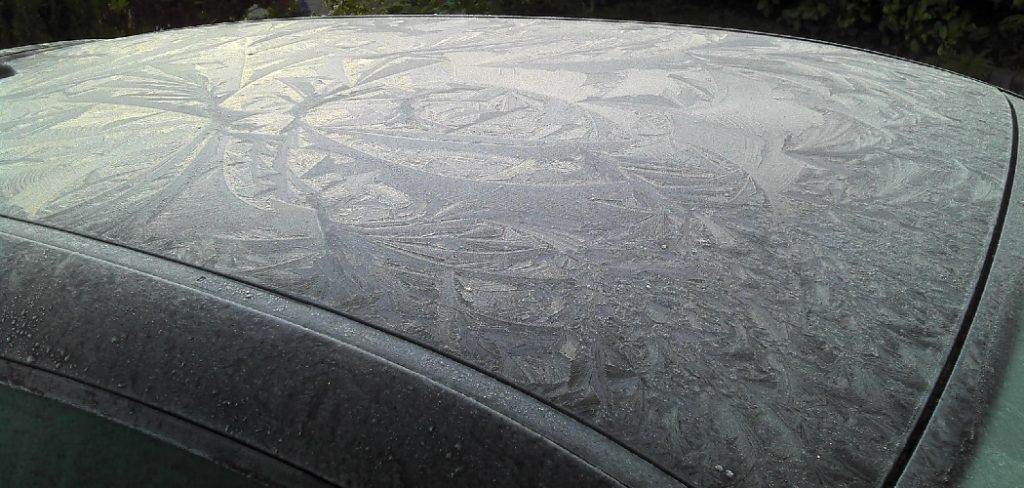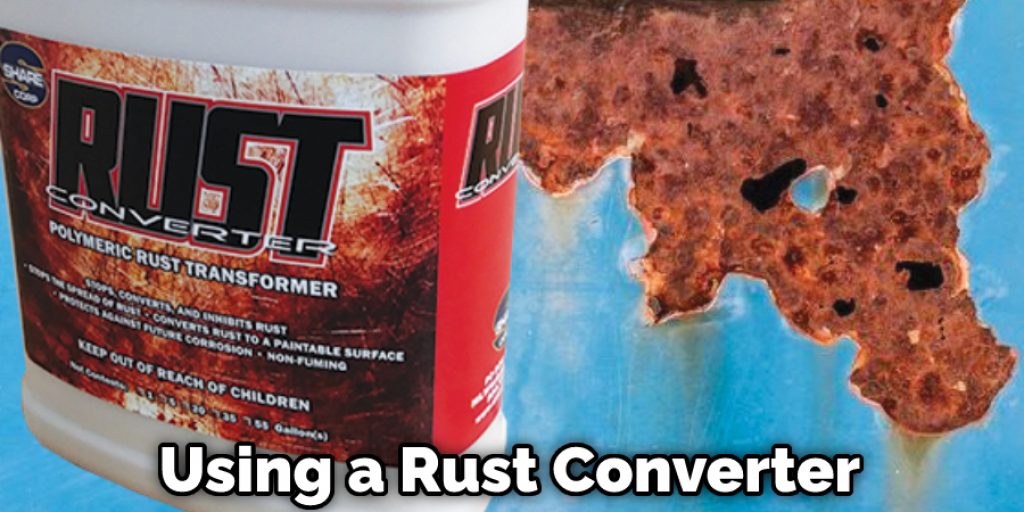If there’s one thing that’s bound to make a car look old and worn, it’s rust. Rusty roofs, hoods, and trunks can quickly make even the most modern vehicle look like an antique. But don’t worry – there are ways to fix a rusted car roof, and it’s not as difficult as you might think! In this post, we’ll walk you through the steps you need to take to restore your car’s roof to its former glory. So read on to find out how to fix a rusted car roof!

One of the most important reasons to fix a rusted car roof is because rust can quickly lead to further damage. If left unchecked, rust can eat away at the metal of your car’s roof, leading to holes and other serious problems. So it’s important to address any signs of rust as soon as you notice them – before they can do any real damage.
Another reason to fix a rusted car roof is that it can be dangerous. A rusty roof can easily cave in, which could seriously injure or even kill the people inside the car. So it’s important to make sure your car’s roof is in good condition and fix any rust you find.
Summary:
Fixing a rusted car roof may seem daunting, but it is achievable with the right supplies and steps. Start by gathering all of the necessary materials, such as sandpaper and epoxy primer. Mask off the area that needs to be repaired and use a wire brush or steel wool to eliminate any rust.
Next, clean the area with detergent before applying both epoxy and filler primer. Sand these down and then apply filler primer followed by a colored base coat. Finish off the repair process with a clear top coat spray for long-lasting results.
A Stepwise Guide on How to Fix a Rusted Car Roof
Step 1: Assess the Extent of Rust Damage
Begin by assessing the extent of the rust damage on your car’s roof. Look for any areas where the rust has eaten through the metal, as well as areas with surface rust. Take note of the size and location of the affected areas, as this will help you determine the necessary materials and tools for the repair.
Step 2: Gather the Necessary Tools and Materials
To fix a rusted car roof, you will need the following tools and materials:
- Protective eyewear
- Work gloves
- Respirator mask
- Wire brush
- Sandpaper (80, 180, and 320 grit)
- Sanding block or orbital sander
- Rust converter (for surface rust)
- Rust repair patch (for larger rust holes)
- Body filler
- Putty knife
- Primer
- Automotive paint (matching your car’s color)
- Clear coat
- Paint thinner
- Paint trays
- Paintbrushes and/or paint rollers
- Automotive masking tape
- Plastic sheeting or drop cloth
- Microfiber cloth
Step 3: Prepare the Work Area
Choose a well-ventilated area to work in, preferably outdoors or in a garage with the door open. Place plastic sheeting or a drop cloth on the ground beneath the car to catch any debris or paint drips.
Step 4: Remove Surface Rust
Put on your protective eyewear, work gloves, and respirator mask. Use a wire brush to remove any loose rust from the surface of the car roof. Then, use 80-grit sandpaper to sand the rusted areas down to bare metal. Be sure to sand a few inches beyond the rusted areas to ensure all rust is removed.
Step 5: Apply Rust Converter (For Surface Rust)
If you are dealing with surface rust, apply a rust converter to the sanded areas according to the manufacturer’s instructions. Allow the rust converter to dry and cure as specified on the product label. This will help prevent the rust from returning.
Step 6: Cut Out and Repair Larger Rust Holes
If the rust has eaten through the metal, you will need to cut out the affected area and repair it with a rust repair patch. Use a metal-cutting tool, such as tin snips or an angle grinder, to carefully cut out the rusted area. Then, follow the manufacturer’s instructions to apply the rust repair patch to the hole. Ensure that the patch is securely attached and covers the entire hole.
Step 7: Apply Body Filler
Mix the body filler according to the manufacturer’s instructions. Using a putty knife, apply the filler to the repaired areas, feathering the edges to blend with the surrounding metal. Allow the filler to dry and cure as specified on the product label.
Step 8: Sand the Filled Areas
Once the body filler has dried, use 180-grit sandpaper to sand the filled areas, ensuring they are smooth and even with the surrounding metal. Then, use 320-grit sandpaper to further smooth the surface, blending it with the surrounding area.
Step 9: Clean the Repair Area
Use a microfiber cloth and paint thinner to clean the repair area, removing any dust, debris, or grease. This will ensure proper adhesion of the primer and paint.
Step 10: Mask Off the Surrounding Areas
Using automotive masking tape and plastic sheeting, mask off the areas around the repair to protect them from overspray during the painting process.
Step 11: Apply Primer
Apply a coat of primer to the repair area, following the manufacturer’s instructions for application and drying times. The primer will help create a smooth surface for the paint to adhere to and will also protect the repaired area from future rust.
Step 12: Apply Automotive Paint
Once the primer has dried, apply a coat of automotive paint that matches your car’s color. Apply the paint evenly using a paintbrush or roller, and follow the manufacturer’s instructions for application and drying times. You may need to apply multiple coats, depending on the extent of the repair.
Step 13: Apply Clear Coat
Apply a clear coat over the paint once it has dried, using the same application process as for the paint. The clear coat will provide a protective layer and give the repaired area a glossy finish.
Step 14: Remove Masking Tape and Plastic Sheeting
Once the clear coat has dried, carefully remove the masking tape and plastic sheeting from the surrounding areas.
Step 15: Clean Up
Clean up the work area by disposing of any used materials and wiping down any tools or surfaces with a microfiber cloth and paint thinner.
In conclusion, fixing a rusted car roof requires careful assessment, the right tools and materials, and patience. If you are unsure about tackling this job yourself, it may be best to seek the assistance of a professional. By following these steps, you can repair your car’s roof and prevent further rust damage, extending the life of your vehicle.
What Can I Do to Prevent This in The Future
You can prevent your car roof from rusting by keeping it well-coated with a protective sealant. You can buy a sealant at any auto parts store, and it’s a good idea to apply it once a year. If your roof does start to rust, there are a few things you can do to fix it.
- Depending on how bad the rust is, you may be able to sand it down and paint over it with rust-inhibiting paint.
- If the rust is more severe, you may need to replace the entire roof panel.
- Another option is to drill holes in the rust and fill them with metal putty or caulking.
- If your car has a sunroof, you can usually remove the metal frame around it to inspect how severe the rust is. Then you can seal the frame back up if it’s not too bad.

What Do You Need to Know About Repairing Rust
The best way to prevent your car roof from rusting is to keep it well-coated with a protective sealant. You can buy a sealant at any auto parts store, and it’s a good idea to apply it once a year. If your roof does start to rust, there are a few things you can do to fix it:
- Depending on how bad the rust is, you may be able to sand it down and paint over it with rust-inhibiting paint.
- If the rust is more severe, you may need to replace the entire roof panel.
- Another option is to use a rust converter. This is a liquid that you brush on to the rust, and it will convert it into a black, rubber-like material that won’t rust anymore.
- If your car has a sunroof, you can usually remove the metal frame around it to inspect how severe the rust is. Then you can seal the frame back up if it’s not too bad.
Frequently Asked Question
Why Are Cars Rusty?
Cars can rust for a number of reasons. One of the most common reasons is that the car is exposed to rain and snow, which can cause the metal to corrode. Another reason is that the car is often in contact with salt, which can also corrode the metal. Cars can also rust when they’re not regularly maintained and not given proper care.
How Much Does It Cost to Fix Rust on A Car?
If the rust is only surface level and can be fixed with a sealant or a coat of paint, it will likely only cost a few hundred dollars. However, if the rust is more severe and requires replacing a panel or using a rust converter, it could cost thousands of dollars. If your car has a sunroof, you may also need to pay for labor costs if the rust is severe enough.
You Can Check It Out to How to Fix a Bent Chrome Rim
Is It Worth Repairing Car Rust?
If the rust is only surface level and can be fixed with a sealant or a coat of paint, it will likely only cost a few hundred dollars. However, if the rust is more severe and requires replacing a panel or using a rust converter, it could cost thousands of dollars. If your car has a sunroof, you may also need to pay for labor costs if the rust is severe enough.

You Can Check It Out to: Fix Wind Noise From Car Door
Conclusion
Rust can be a major problem for car owners, as it can lead to extensive damage if not fixed. In this article, we’ve shown you how to fix a rusted car roof using a few simple tools and some elbow grease. We hope you found this information helpful and that it allows you to keep your car in good condition for years to come. Have you tried repairing rust on your own? Let us know how it went in the comments below!
You Can Check It Out to: Use Auto Body Repair Tape
